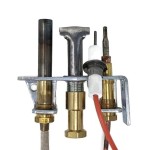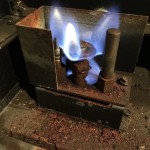How To Mount a Flat Screen TV Above a Gas Fireplace: A Comprehensive Guide
Mounting a flat screen television above a gas fireplace can be an attractive way to optimize space and create a visually appealing focal point in a living room. However, it’s a project that demands careful consideration and meticulous execution due to the unique challenges associated with heat exposure and structural integrity. This article provides a detailed guide on the process, highlighting key factors to consider and outlining the necessary steps for a safe and successful installation.
Before embarking on this project, it's crucial to understand the potential risks. The primary concern is heat emanating from the gas fireplace. Excessive heat can damage the television's internal components, shortening its lifespan and potentially voiding the warranty. Therefore, thorough assessment and preventative measures are paramount.
Assessing the Heat Factor: Determining Suitability
The first and most crucial step is to evaluate the amount of heat produced by the gas fireplace and its potential impact on the television. This involves understanding the fireplace's BTU (British Thermal Unit) output and measuring the temperature above the mantel. The BTU rating indicates the amount of heat the fireplace generates; a higher BTU rating typically signifies more heat output. Refer to the fireplace's owner's manual for this information.
To measure the temperature, operate the fireplace at its highest setting for a reasonable duration (e.g., one hour) and use a thermometer to record the temperature at the intended location of the television. Ideally, the temperature should not exceed 90 degrees Fahrenheit (32 degrees Celsius). If the temperature exceeds this threshold, mounting a television directly above the fireplace is generally not recommended without significant mitigation strategies.
Several factors influence the temperature above the fireplace, including the height of the mantel, the depth of the recess (if any), and the presence of any heat shields. A deeper mantel will provide more shielding, and a heat shield can deflect rising heat away from the television. Fireplaces designed with a "cool-touch" glass or those with built-in blowers that direct heat outward rather than upward are also more suitable for television mounting.
Consider installing a thermal barrier. This barrier is typically made of a heat-resistant material like cement board, rock wool insulation, or specialized heat-shielding panels. The barrier is installed between the fireplace and the television mount, effectively reducing the amount of heat reaching the television. Be sure that the thermal barrier is rated for high temperatures and installed according to the manufacturer's instructions.
Structural Considerations: Ensuring Secure Mounting
Beyond heat, the structural integrity of the wall above the fireplace is critical. The wall must be capable of supporting the weight of the television and the mounting bracket. This requires locating the wall studs, which are vertical framing members that provide the necessary support. Stud finders, available at most hardware stores, can assist in locating these studs. If the studs are not positioned ideally for centering the television, modifications might be necessary.
There are different types of wall studs to be aware of. Wood studs are the most common and generally provide adequate support for most televisions. Metal studs are sometimes used in newer construction, especially in commercial buildings. While metal studs can be strong, they may require specialized anchors and mounting techniques. Plaster and lath walls, common in older homes, can be particularly challenging as they tend to crumble easily. Securing a television mount to plaster and lath walls typically requires specialized anchors designed for this type of construction.
If the studs are not ideally located, consider using a larger mounting plate that spans across multiple studs. This distributes the weight more evenly and provides a more secure installation. Alternatively, you may need to install additional blocking between the studs to provide a solid anchoring point for the mount. Blocking refers to pieces of wood inserted horizontally between the studs. These blocks are screwed into the studs to create a sturdy platform for attaching the television mount.
When selecting a mounting bracket, choose one that is specifically designed for the size and weight of your television. The bracket should also be compatible with the VESA (Video Electronics Standards Association) mounting pattern on the back of your television. VESA patterns are standardized hole patterns that ensure compatibility between televisions and mounts. Overloading the mounting bracket or using an incompatible bracket can lead to the television falling, resulting in damage and potential injury.
Consider the type of mount. A fixed mount is the simplest and most economical option, holding the television flush against the wall. A tilting mount allows you to angle the television downward, which can improve viewing angles if the television is mounted high. A full-motion mount allows you to extend, swivel, and tilt the television, providing maximum flexibility in viewing positions. The chosen mount should be appropriate for the desired viewing experience and the specific constraints of the installation location.
Protecting the TV: Mitigating Heat Damage
Even if the temperature measurements are within acceptable limits, taking additional precautions to protect the television from heat damage is prudent. Strategies include creating ventilation and employing heat-deflecting materials.
Ensure adequate ventilation around the television. Leave sufficient space between the television and the wall to allow for airflow. Consider installing a small fan behind the television to circulate air and prevent heat buildup. A gap can be created by adding spacers between the TV mount and the wall. These spacers will allow for better airflow to dissipate heat.
Install a heat shield above the fireplace to deflect heat away from the television. Heat shields are typically made of metal or other heat-resistant materials and are designed to redirect rising heat. Ensure the heat shield is properly installed and covers the entire area above the fireplace.
Consider using a recessed outlet box to conceal the power cord and HDMI cables. This helps to create a cleaner look and also protects the cables from heat exposure. Recessed outlet boxes also allow the television to sit closer to the wall, maximizing space savings.
Run all cables (power, HDMI, etc.) through the wall to conceal them. This not only improves the aesthetics but also protects the cables from heat damage. Use in-wall rated cables, which are designed to withstand higher temperatures. Be sure to follow all local electrical codes when running cables through the wall.
Monitor the temperature regularly after installation. Use a thermometer to check the temperature near the television while the fireplace is in use. If the temperature exceeds acceptable levels, take corrective action, such as adjusting the fireplace settings, adding more insulation, or installing a larger heat shield.
Consider purchasing a TV designed to withstand higher temperatures. Outdoor televisions are built to withstand the elements, including temperature extremes. While they are more expensive than standard indoor televisions, they may be a worthwhile investment if you are concerned about heat damage.
Consider an alternative location for the TV. Sometimes, the best solution is to simply choose a different location for the television. Mounting the television on a nearby wall or placing it on a stand are viable alternatives that eliminate the risk of heat damage.
Ultimately, the decision to mount a flat screen television above a gas fireplace requires careful consideration and a thorough understanding of the potential risks. By accurately assessing the heat factor, ensuring structural integrity, and taking preventative measures to protect the television, you can create a safe and visually appealing entertainment center.

Can I Mount My Tv Above The Fireplace

Can I Mount My Tv Above The Fireplace
Can I Mount A Tv Over My Fireplace Heatilator

Ortal S Innovative Technology Makes It Safe To Mount A Tv Above Your Fireplace

ᑕ❶ᑐ What To Consider Before Mounting A Tv Above Fireplace

Installing A Tv Above The Fireplace

ᑕ❶ᑐ What To Consider Before Mounting A Tv Above Fireplace

Safely Mount A Tv Above An Electric Fireplace Touchstone Home S Inc

How To Mount A Tv Over Fireplace Vertical Chimney Care

Mounting A Tv Over Fireplace Hearth Cabinet








